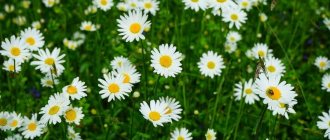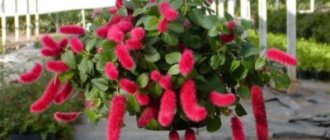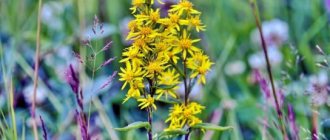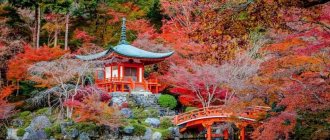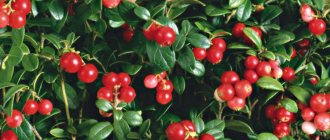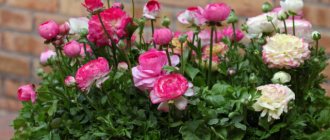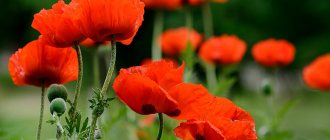Nowadays, many areas are planted with various lawns. They look very stylish and beautiful. But not everyone knows that there are different types of lawns. It is worth noting that they are divided into decorative and for special purposes. Almost always decorative ones are chosen for garden plots. And on sports or children's playgrounds, sports lawns are most often installed, which are more resistant to stress.
Decorative lawns are also divided into several types, such as meadow, garden and park lawns. To create a parterre lawn at your dacha, you should use grasses with thin stems and narrow leaves, belonging to the category of perennial plants and forming a uniform, low grass stand of sufficient density from March to late autumn. Most often, grass mixtures are used to create it, which consist of meadow bluegrass, red fescue or common field. In addition, other types of fescue can be grown on a parterre lawn, such as sheep fescue and longleaf fescue. Bentgrass is also suitable for this purpose: shoot-bearing, doggrass, thin. Such lawns are most often grown in the front part of a summer cottage. This is due to the fact that it is considered the most elite lawn of all. Features of the ground lawn:
• forms dense, monochromatic greenery with a rich emerald hue;
• performs a decorative function;
• not intended for constant walking on it and, especially, for children’s and sports games, since trampling has a negative impact on its condition and, accordingly, appearance;
• requires careful preparation of the soil for sowing and regular maintenance;
• to create it, lawn grass seeds are used, the cost of which exceeds that of grass mixtures for garden lawns.
Picture 1
A subspecies of the ground floor is the English lawn. It causes no less admiration, but it also has some differences: for example, the height of the grass stand is several centimeters; certain moisture and softness. Such a lawn should be mowed 2-3 times a week, and its care should be thorough.
By mixing leguminous grasses, you can get a lawn of beautiful flowering meadows and meadows. Most often, meadow lawn is used in areas of natural meadow. Before sowing, the grass is mowed and only after that the grass mixture is sown. Meadow lawns most often include leguminous grasses. Leguminous herbs include red clover, horned butterfly, blue alfalfa, sainfoin and many others. It is worth remembering that when a clover lawn blooms, it emits the aroma of flowers, which in turn attracts bees, wasps and other insects. Moreover, if you want to get rid of it, you will have to put in a lot of effort, as it grows quickly. The advantage is that it tolerates drought well, is easy to grow in any soil, does not require fertilizing, and at the same time has a fairly rich color and beautiful appearance when flowering. However, a meadow lawn must be regularly maintained, otherwise weeds and overgrown with tall grass cannot be avoided.
Also nowadays you can grow Moorish lawn. It is also called flowering or variegated. This is due to the fact that when growing, the area will be filled with a large number of flowers that will soon bloom. Such a lawn consists of poppy, gypsophila, flax, nemesia, cornflower and various other herbs. They arrange it in parks, gardens, meadows and lawns, under fruit trees or near hedges. It has one feature: it only needs to be trimmed once per season. And the Moorish lawn is not demanding on the quality of the soil, maintaining its decorative appearance on soils poor in nutrients. So it does not need frequent fertilization. This type of lawn is mowed after the plants have flowered.
Landscape lawn grasses are often grown in cultural and recreation parks. In order to grow such a lawn, also called an ordinary lawn, the same herbs are used as for the ground floor. But to create it, several other herbs are also added, such as sheep fescue, rhizomatous wheatgrass, comb-shaped wheatgrass and others.
The choice of grass mixtures depends on the climatic zone in which the site is located, the quality of the site and many other factors. Now you can immediately purchase grass mixtures that are intended for shady areas or for sunny areas.
Children's playgrounds can be located on ordinary lawns, since they are very resistant to trampling and frequent mowing and do not require careful maintenance. The advantages of a garden lawn also include:
• durability;
• good winter hardiness and shade tolerance;
• lower cost and easier germination of cereal seeds used to create it, compared to those used for parterre lawns.
The disadvantage of an ordinary lawn is that from the end of spring to the end of summer, the latter needs frequent cuttings - this is due to the rapid growth of grass. However, when using a lawn mower with a cylindrical blade, which leaves beautifully alternating dark and light stripes on the green surface, this drawback loses its significance.
Recently, the lazy lawn has become increasingly popular. In appearance, it resembles a field covered with wild herbs. This type of lawn is called lazy for a reason: it requires almost no maintenance, and creation requires minimal effort and time. In order to obtain it, you just need to rid the area of weeds and plant plants suitable for your area, as well as seeds of ryegrass, fescue, bentgrass and bluegrass. The lazy lawn is mowed twice a month.
Figure 2
Lawns for special purposes are divided into two types.
The first type is called sports, it is mainly used in stadiums or football fields. Its main characteristics:
• high resistance to trampling, mechanical damage, as well as constant and prolonged loads;
• formation of a dense, uniform, elastic green cover that does not impede movement;
• the need for frequent mowing and regular maintenance.
For a sports lawn, grasses are selected depending on what kind of sport they are going to practice on it.
The second type of lawn grass is designed for steep slopes. After seeding a lawn for steep slopes, it is best to cover it with something. This is done to prevent the seeds from scattering when exposed to wind. Also, when sowing, the soil should be secured with plastic nets or geogrids. In order to prevent wind and water erosion of the soil, it is recommended to sow the lawn on steep slopes with a special grass mixture for slopes. It differs from ordinary lawn grass in its unpretentiousness, ability to withstand various adverse weather conditions, and the presence of a strong root system; the formation of a dense, powerful turf layer. This grass mixture includes tall fescue, meadow timothy, perennial ryegrass, and yellow sweet clover.
A few words should also be said about city and shady lawns. Urban is unpretentious because it consists of herbs that do not need regular care, frequent cutting and have excellent frost resistance. He is not at all afraid of being trampled. To create an urban lawn, it is optimal to use a grass mixture whose components are perennial ryegrass, fescue and timothy. The ratio of these plants is 1:1:2.
As for the shady lawn, its purpose is to decorate an area immersed in the shadow of a house or tall trees. Of course, creating such a lawn involves the use of shade-tolerant grasses. Red fescue is ideal in this sense. There should be more of it in the grass mixture than other plants.
Figure 3
The most important thing to remember is that when growing any type of lawn, a lot of time and effort will be spent, as well as initially deciding on the type of lawn grass.
Content
- 1. 3 main types of lawns by purpose
- 2. Parterre lawn
- 3. Landscape lawn
- 4. Meadow lawn
- 5. Moorish lawn 5.1. Moorish lawn: pros and cons
For a person who is not an expert in the field of decorative gardening or landscape design, the difference between different types of lawns, for example, garden and parterre lawns, is almost invisible at first glance.
Even less is known about the unique differences of sports turf. And the type of lawn that is still little known is the Moorish lawn, which is a type of meadow lawn. In this article we will look at the main differences between different types of lawns depending on the purpose of use, and also provide a list of classic grass mixtures for each. Let us remind you once again that a lawn is a specially constructed area, leveled and seeded with low-growing grasses. The plants form a dense turf covering. Meadow and Moorish lawns also contain seeds of beautifully flowering field annuals.
IN THE PHOTO: Lawn in the famous village of Abramtsevo.
Useful tips and tricks
In order for a lawn with grass that displaces weeds to maintain an attractive appearance, it is recommended to take the following measures:
- regardless of the composition of the herbal mixture that displaces weeds, apply complex fertilizers consisting of nitrogen, potassium and phosphorus (4, 1 and 2 parts, respectively) in early spring;
- the annual norm of fertilizing should not be applied in large quantities; it is advisable to divide the application of fertilizers into 5-6 stages and carry them out at regular intervals;
- at the end of the season, liming the soil using ash or dolomite flour;
- to increase the density of the turf (and improve the displacing properties of the grass), you need to mow the lawn 1-2 times a week, and the grass will also become dense and even;
- watering the grass that displaces weeds should be done using a fine-grained spray; do not direct a stream from a hose onto the lawn;
- Too dense turf must be treated with a special aerator roller.
Parterre lawn
Parterre lawns are the most decorative of all. Their function is to decorate and highlight the main parts of the garden: sculptures, fountains, decorative ponds. The ground lawn in the garden pleases the eye with lush greenery from early spring until frost. The grass stand is low, close, dense and uniform. Herbs that can be sown for a parterre lawn: red fescue, thin bentgrass, meadow grass. These are perennial plants with graceful thin stems and narrow leaves; they bush intensively.
The ground lawn is a decoration of the site. In most photos with ancient estates, it is he who is depicted against the backdrop of a green carpet. Such a site evokes admiration and is pleasant to look at. The shimmering emerald green of the cereals soothes the eye and sets one up to contemplate the beauty of the entire landscape as a whole. It is for this reason that it is often used to decorate memorial areas of parks, ornamental landscaping areas (for example, next to flower beds), historical sites, and buildings of higher government institutions.
IN THE PHOTO: The ground lawn at Buckingham Palace.
What do those who decide to decorate their yard with it need to know about the disadvantages of a parterre lawn?
Numerous reviews have identified several main problems:
- You cannot walk on the ground lawn. Of course, if you step on the grass a couple of times, nothing bad will happen, but if you regularly run on it or run, for example, to the garage and back during the day, the lawn will be trampled in areas of intense stress.
- The ground lawn requires regular maintenance. You need to have an idea of how to cut, weed and fertilize the grass mixture so that it remains decorative.
- The cost of seeds and sod of a parterre lawn is higher than that of other types.
- The mixture for a parterre lawn germinates more slowly, and the plants themselves take a long time to grow.
- In order to achieve the effect as in advertising photos, the soil must be carefully prepared before laying the turf, since a low-cut parterre reveals any unevenness in the relief.
IN THE PHOTO: Apparently, the soil was not properly prepared for this lawn (Germany, Potsdam, Sanssouci Palace).
Video description
which shows how Irish moss can be used instead of grass:
Non-grassy lawns
There are skillful imitations of green lawns created using ground cover plants. They are used where it is not possible to carefully care for a green lawn, where you need to quickly landscape a large area without much effort, where it is necessary to emphasize the style chosen for creating a landscape design.
Such lawns have a miraculous appearance, they do not require special care, and a wide variety of plants can be chosen. It is determined by the need to create some special decorative effect. Clover, phlox, thyme and tenacious are best suited for this.
Lawn created using ground covering plants Source za.pinterest.com
Special lawns
These include lawns that are created for a specific practical purpose. For example, to strengthen hill slopes, sod roadsides, and prevent soil erosion on the banks of reservoirs. For this, plant seeds are used that grow quickly and form a very dense turf.
To ensure that the lawn in such situations can cope with the function assigned to it, additional devices are used. When strengthening a slope to prevent seeds from sliding down, a geogrid is used. It is inserted directly into the soil before planting seeds and holds the soil well. To create special lawns, perennial ryegrass (50% of the grass mixture), meadow fescue (25% of the mixture) and white bent (25%) are usually used.
Garden lawn
Under such a beautiful and perhaps a little loud name hides everyone’s favorite and familiar garden lawn. This is what is sown at the dacha, in most parks, recreation areas and, alas, sometimes along roads and highways, although a different type of lawn is intended for these purposes.
What are the requirements for a garden lawn? Firstly, it must be resistant to mechanical stress - after all, people will walk, run and even lie on it! Secondly, shade tolerance, resistance to drought and other external environmental factors. Before planting such a lawn, it is worth choosing a suitable grass mixture. In addition to some varieties of grasses that are also used in arranging parterre lawns (red fescue, bentgrass), the following plants are suitable:
- common bluegrass;
- bluegrass;
- sheep fescue;
- furrowed fescue (a subspecies of Wallis fescue);
- perennial ryegrass;
- common comb;
- wheatgrass without rhizomes.
In the photo, the garden lawn looks almost as attractive as the ground floor. The difference will only be visible “live”. If the lawn grasses in the mixture are selected correctly and correspond to the climatic conditions of your region, then it does not require special care. Occasionally, weeding from the ubiquitous dandelions and, of course, regular haircuts may be required.
Of course, in practice, “lawn growers” face a whole host of problems, since, unfortunately, the domestic industry is still in the development stage. And the purchased foreign grass mixtures turn out to be not adapted to Russian realities. Often, the buyer himself does not understand that certain types of lawn are not at all suitable for an unprepared area, for example, the “English lawn”, which loves moist soil rich in organic matter. In our next articles we will talk in detail about lawn problems and ways to solve them.
IN THE PHOTO: Landscape lawns are literally made for lying on the grass in sunny weather!
meadow lawn
A meadow lawn is created against the background of an existing grass stand by sowing a mixture of cereals selected taking into account the growing conditions.
How can I add new herbs? Usually, for this purpose, the turf is subjected to surface treatment and the grass mixture is sown. The famous English gardener Monty Don uses an ordinary shovel for this and lightly digs up the top layer of soil with a third of the bayonet. Then he levels it with a rake and sows new grasses. Minor damage to already growing grasses stimulates the formation of new growth.
The most commonly used crops are:
- horned frog;
- sainfoin;
- clover (red, white, hybrid);
- alfalfa (yellow, blue, hop-like).
The mixture for meadow lawn blooms picturesquely, forming bright lawns and clearings.
IN THE PHOTO: Meadow lawn on both sides of the grass path.
Possible diseases and pests, ways to get rid of them
Ant grass (photos clearly demonstrate the attractiveness of the plant) has strong immunity and rarely gets sick.
But in unfavorable conditions it can be affected by the following diseases:
| Name | How to recognize |
| Withering | A fungal disease that develops with excessive watering, frequent precipitation, fog and morning dew, and at temperatures of +16...+21 °C. And the disease can be recognized by the leaves drying out at the edges. Moreover, first the plates located on the lower tiers of the grass turn yellow and die. |
| Rust | The disease often develops in the summer. And because of it, the stems of the plant turn brown and die. |
| Powdery mildew | A fungal disease that is provoked by high humidity. It can be recognized by a white coating, reminiscent of the structure of a spider web or cotton wool fiber. |
| Root rot | It develops with excessive watering, planting in lowlands and wetlands. The disease manifests itself in the form of brown rings on the lawn, which over time turn into large bald spots. |
| Helminthosporiosis | The disease develops in autumn, in cool and damp weather. It can be recognized by yellow spots with brown edges that form on the foliage of the grass. |
| Cortical disease | The disease progresses in the fall. And when infected, red-pink spots appear on the leaves, resembling thin fibers. |
To cure any of the diseases, you will need to follow these instructions:
- Remove affected plants.
- Trim the remaining grass low and comb it.
- Treat the areas where the diseased knotweed grew with fungicides (Fitosporin-M, Trichodermin, Bordeaux mixture). You will need to spray the soil with preparations 2-3 times.
- In autumn, it is good to dig up the soil in empty areas, loosen it and fertilize it with preparations containing phosphorus and potassium.
Mown grass should be immediately removed with a rake and destroyed away from the site.
In some cases, knotweed is attacked by the following insects:
| Name | What does it look like | How to fight |
| Root nematodes | Small worms that are difficult to see with the naked eye. They feed on plant roots, which leads to their withering and death. Pests can be recognized by the swellings that form on the roots of the grass. | To kill pests, you will need to use drugs with phosphamide. For preventative purposes, it is worth planting calendula or marigolds around the lawn. |
| Long-legged mosquitoes | These insects are often confused with malaria mosquitoes. But they are harmless to humans, which cannot be said about the lawn. The larvae of these pests eat grass, which leads to the formation of brown spots on the lawn. | Water the area damaged by the pest well and cover with black film. After a day, remove the cover and collect all the insects that crawl out. The grass can also be treated with insecticides containing hexochlorane. |
Do not overuse pesticides to kill pests. These drugs are toxic and do more harm than good.
Moorish lawn
In the list of types of grass coverings, the Moorish lawn stands apart. It is notable to a greater extent not for its grass-like grasses, but for its flowering plants: poppies, cornflowers, gypsophila, marigolds, flax, nemesia, etc. The Moorish lawn attracts bees and butterflies to the garden, requires virtually no maintenance, and decorates any area. Flowers are distinguished by a variety of shapes and a riot of colors. And yet, the mixture for the Moorish lawn is dominated by grass-like grasses designed to displace weeds: bentgrass, meadow bluegrass and some others (again, depends on the specific manufacturer and composition of the grasses).
IN THE PHOTO: Examples of Moorish lawn.
Moorish lawn: pros and cons
The Moorish lawn looks impressive in landscape design both in photos and in real life; it is quickly gaining popularity among owners of houses with garden plots. True, reviews about this class of decorative lawn are contradictory: some note the advantages, others note the disadvantages. Let's try to highlight the main ones.
Pros:
- There is no question of how often to mow this lawn so that it does not grow too tall. A haircut twice a year is enough.
- The Moorish lawn is not picky about soil quality.
- The simple beauty of meadow flowers will decorate any area of the yard or garden.
Minuses:
- The lawn requires moisture. Limited watering will lead to loss of flowering plants or at least a decrease in the quality of flowering. Remember that Moorish lawn is a type of meadow lawn. Where do the most beautiful meadows flourish? That's right - in the floodplains of rivers and lakes.
- The lawn contains a lot of honey plants, which means that there will always be not only butterflies, but also bumblebees and bees on the site. Such a lawn is unlikely to be suitable for allergy sufferers and families with small children.
Currently, grass mixtures of Moorish lawns are being created with flowering plants that are undemanding to soil moisture: different types of cornflowers , carnations , echinacea , sage and even rose holly , which will rise on lush forbs. Pay attention to the composition of the herbs on the seed packet. If it contains the grasses mentioned above, then you will not have to water such a lawn often.
Annual herbs
Since the lawn is not created for one year, annual grasses are practically not used in it. The exception is temporary lawns. For example, it is planned to create a flower garden on the site, but not now, but in a year or two. In this situation, it is advantageous to sow the land with annual or biennial cereals or herbs: an unimproved piece of land will not spoil the landscape, and in due time the soil will be easy to cultivate, since annual plants will not create turf.
There are not many annual grasses for lawns, perhaps due to the fact that they are not in great demand. Most often, only two types are used in landscaping, ryegrass and bluegrass.
Sports turf
Grass mixtures for sports turf include not just wild plant species that are resistant to trampling, but specially bred varieties of the following grasses:
- Perennial ryegrass or perennial ryegrass (varieties 'Platinum', 'Stravinsky', 'Neruda' and others);
- Bentgrass 'Cobra Nova', 'Cromie';
- Meadow bluegrass varieties 'Panduro', 'Miracle', 'Julius';
- Modified red fescue varieties 'Trophy', 'Blenheim', 'Maritsa' and others.
IN THE PHOTO: Grasses for sports lawns must be very resistant to trampling.
Characteristic
The grass-ant, the photo of which is given in the material, belongs to the large Buckwheat family. This annual plant is common in Europe, Asia, and North America. Now it is cultivated in the temperate zones of the Southern Hemisphere.
The plant has a thin branched stem, reaching up to 40 cm. Over time, it hardens and bends to the ground. The leaves of the grass are small, alternate, with an elongated elliptical shape located on short petioles. They reach up to 5 cm in length and 1.5 cm in width. The leaves are colored in dark green shades.
The flowering period of the plant lasts from April to October. At this time, small buds of regular shape, colored green with white or pink edging, are formed in the axils of the leaves. Subsequently, they form triangular dark brown seeds. They ripen from early July to mid-September.
Varieties of lawn for areas with specific conditions
In addition to the main classification, there is a “consumer” classification, which takes into account the immediate conditions of each specific site: its level of lighting, trafficability, proximity to groundwater, and even whether children will play on it or animals will frolic there. Often such a narrow, specialized division into classes is nothing more than a marketing ploy (for example, any sports lawn is perfect for playing with children, and there is absolutely no point in buying some special “Lawn for Children” with an additional charge).
We have prepared a table that will help you determine which type of lawn is most suitable for your site.
| Description of the site | Suitable lawn |
| A plot with a flat surface, with good, fertile soil. A place where they usually don’t go - for example, under the window of a house or around a flower garden. | Parterre lawn. Predominant grasses: meadow fescue, white bentgrass. A beautiful, smooth, uniform coating that requires maintenance and is not resistant to trampling. |
| “Inconvenient” areas, with infertile, heavy soil. Places along the paths, next to the fence, in the corners of the site. | Universal lawn. Predominant grasses: ryegrass, red fescue, meadow grass. This lawn tolerates adverse impacts well and is easy to care for. The only thing it requires is frequent haircuts. |
| A place for picnics, children's games, and walking pets. High traffic area. | Sports turf . Ryegrass and meadow fescue predominate. Such a lawn requires regular mowing; it is hard, but copes well with high mechanical loads. |
| An open place exposed to direct sunlight. An area unsuitable for ordinary grass - the greenery burns out in the heat. | Lawn for sunny places. The composition of the mixture includes cereal crops that are resistant to drought (red fescue, tall fescue). This lawn is not afraid of hot air and bright sun. |
| A shady place under trees, a fence, between buildings. | Lawn for shady places. The composition of the lawn must include ryegrass, bentgrass or red fescue. This is not to say that this lawn is particularly attractive, but it does not require strong lighting. |
How to choose the right grass mixture for your lawn and what plants you should pay attention to, read our next article.
Unforeseen difficulties
All areas and types of lawns have problems associated with various stresses, that is, deviations from optimal conditions. Many studies show that stress factors such as poor soil, drought, excessive moisture, shade, frost and disease, together with increased use, increase their adverse effects. Most stress can be reduced through cosmetic procedures. However, there are also those who do not find a solution. Some of these include certain fungal diseases such as devil's vertebrae or cap mushrooms. These fungi live in symbiosis with grasses, and their development is favored by thick, moist turf with a high content of dead leaves. Cap mushrooms also appear on very well-kept lawns.
Another factor that worsens the appearance of a lawn is shadow tension. It is rarely possible to get a dense and smooth lawn near trees and buildings.
One of the important ways to relieve stress is the correct selection of species and varieties. Skillful combination of cultivar characteristics in a mixture can optimize response to adverse conditions. Each variety has the best and worst periods during the year for the manifestation of favorable beneficial properties, therefore the creation of lawn mixtures should be preceded by an individual examination of the varieties based on their characteristics.


